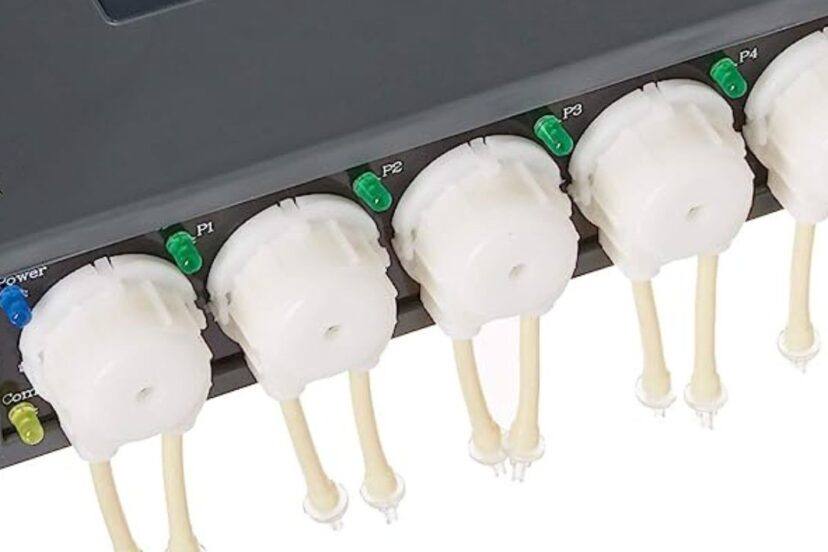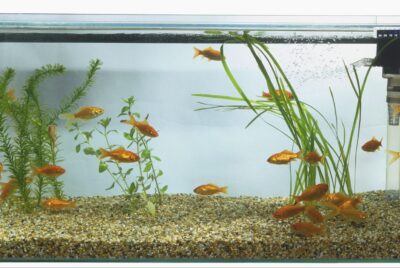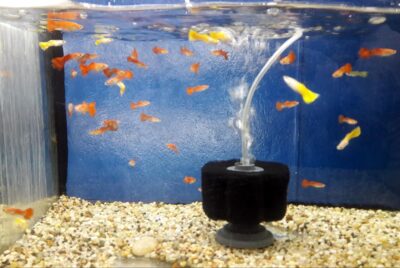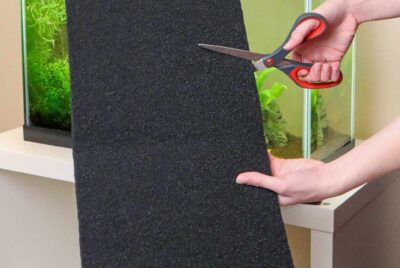Aquarium Dosing Pump
As a devoted fishkeeper, I understand the importance of maintaining optimal water conditions in an aquarium. That’s why I want to share my insights on a valuable tool that can greatly simplify this task: the aquarium dosing pump. In this article, I will guide you through the benefits of using an aquarium dosing pump, the factors to consider when choosing one, how to set it up properly, common mistakes to avoid, and essential tips for troubleshooting. So, let’s dive in and explore the world of aquarium dosing pumps!
Why You Need an Aquarium Dosing Pump
Managing water parameters in an aquarium can be challenging, especially when it comes to maintaining consistent levels of essential elements and supplements. This is where an aquarium dosing pump proves its worth. By automating the process of adding additives, such as trace elements, fertilizers, and pH buffers, it ensures a stable and healthy aquatic environment for your fish, corals, and plants. With precise and programmable dosing capabilities, these pumps alleviate the burden of manual dosing, providing you with more time to enjoy your underwater oasis.
Factors to Consider When Choosing an Aquarium Dosing Pump
When selecting an aquarium dosing pump, several factors come into play to ensure the right fit for your specific needs. Let’s explore the key considerations:
1. Tank Size and Volume
The size of your aquarium plays a vital role in determining the appropriate dosing pump. Larger tanks may require pumps with higher flow rates and larger reservoirs, while smaller tanks can benefit from compact and space-saving options.
2. Types of Aquarium Dosing Pumps
There are various types of dosing pumps available, including peristaltic pumps, piston pumps, and syringe pumps. Each type has its pros and cons, so it’s important to research and choose the one that aligns with your requirements and budget.
3. Accuracy and Precision
Accurate dosing is crucial to maintain stable water parameters. Look for pumps that offer precise measurements and reliable dosing capabilities to prevent overdosing or underdosing.
4. Programmability and Automation
The ability to program dosing schedules and automate the dosing process can greatly simplify aquarium maintenance. Seek pumps with user-friendly interfaces and advanced programmability features to effortlessly customize dosing regimens.
5. Connectivity and Control Options
In today’s interconnected world, having a dosing pump that can be controlled remotely via a smartphone app or integrated into a centralized aquarium controller system adds convenience and flexibility to your dosing routine.
Benefits of Using an Aquarium Dosing Pump
Now that we understand the factors to consider when choosing a dosing pump, let’s delve into the numerous benefits it brings to your aquarium:
1. Maintaining Water Parameters
Consistency is key when it comes to water quality in your aquarium. A dosing pump ensures that essential elements and additives are consistently supplied, reducing fluctuations and providing a stable environment for your aquatic inhabitants.
2. Alleviating Manual Labor
Bid farewell to the time-consuming and labor-intensive process of manual dosing. With an automated dosing pump, you can say goodbye to hand-dosing each additive and enjoy more leisurely moments observing your vibrant underwater ecosystem.
3. Enhancing Coral and Plant Growth
Coral reefs and planted aquariums thrive on specific nutrients and trace elements. A dosing pump enables precise dosing of these essential components, promoting healthy growth and vibrant colors in your corals and plants.
4. Reducing Algae Growth
Algae outbreaks can be a common headache for aquarium enthusiasts. By maintaining optimal nutrient levels with a dosing pump, you can effectively control algae growth, creating a clean and visually appealing aquarium environment.
5. Minimizing Nutrient Imbalances
Imbalances in nutrients can have detrimental effects on your aquarium’s overall health. A dosing pump allows you to carefully adjust and maintain optimal levels of nutrients, preventing nutrient deficiencies or excesses that can harm your aquatic ecosystem.
How to Properly Set Up an Aquarium Dosing Pump
To maximize the benefits of your dosing pump, follow these essential steps for a proper setup:
1. Placement and Mounting
Find a suitable location near your aquarium for the dosing pump. Consider factors such as accessibility, stability, and noise levels. Mount it securely to prevent vibrations or accidental falls.
2. Calibration and Calibration Solutions
Before using the dosing pump, calibrate it according to the manufacturer’s instructions. Calibration solutions are typically provided and ensure accurate dosing measurements.
3. Tubing and Connections
Connect the dosing pump to your aquarium using appropriate tubing and fittings. Ensure a secure and leak-free connection to maintain consistent dosing.
4. Programming and Scheduling
Set up your dosing pump according to your specific requirements. Program the dosing schedule, taking into account the dosing intervals and quantities recommended for your additives.
Common Mistakes to Avoid with Aquarium Dosing Pumps
While dosing pumps offer immense benefits, it’s crucial to avoid common pitfalls to ensure optimal performance and the well-being of your aquarium inhabitants. Let’s highlight some key mistakes to steer clear of:
1. Overdosing or Underdosing
Excessive or insufficient dosing can disrupt the delicate balance of your aquarium. Carefully follow dosing guidelines and regularly monitor your water parameters to avoid overdosing or underdosing.
2. Neglecting Regular Maintenance
Maintenance is essential to keep your dosing pump functioning at its best. Regularly clean the pump, check tubing for blockages, and replace any worn-out parts to prevent malfunctions.
3. Failing to Monitor and Adjust Parameters
Even with a dosing pump, it’s important to regularly monitor and adjust your water parameters. Test your water regularly and make adjustments to dosing quantities as needed to maintain optimal levels.
4. Using Incorrect Solutions or Additives
Ensure you are using the correct solutions and additives suitable for your specific aquarium needs. Using incompatible or low-quality products can negatively impact water quality and the health of your aquatic inhabitants.
Troubleshooting and Tips for Optimal Performance
Occasionally, you may encounter issues or challenges with your dosing pump. Here are some troubleshooting tips and suggestions for optimal performance:
1. Checking for Air Bubbles or Blockages – (Aquarium Dosing Pump)
Air bubbles or blockages in the tubing can disrupt dosing accuracy. Regularly check for any obstructions and purge air bubbles from the system to maintain smooth operation.
2. Cleaning and Maintaining the Pump – (Aquarium Dosing Pump)
Clean your dosing pump regularly to remove debris or buildup that can hinder its performance. Follow the manufacturer’s guidelines for maintenance and use appropriate cleaning solutions.
3. Monitoring and Adjusting Flow Rates
Monitor the flow rates of your dosing pump to ensure consistent dosing. Adjust the flow rates as necessary to meet the demands of your aquarium and prevent any imbalances.
4. Keeping Spare Parts and Supplies
It’s always wise to have spare parts and supplies on hand in case of emergencies or replacements. Keep an extra set of tubing, fittings, and calibration solutions to avoid any disruptions in your dosing routine.
Conclusion – (Aquarium Dosing Pump)
In conclusion, an aquarium dosing pump is an indispensable tool for any fishkeeper who aims for optimal water quality and a thriving aquatic ecosystem. By automating the dosing process, these pumps save time, maintain stable water parameters, and contribute to the overall health and beauty of your aquarium. Remember to choose a dosing pump that suits your tank size, offers accuracy and precision, and provides the desired level of programmability. Proper setup, regular maintenance, and avoiding common mistakes will ensure the best performance from your dosing pump, allowing you to enjoy the wonders of the underwater world with ease.
Frequently Asked Questions – (Aquarium Dosing Pump)
Q: How often should I calibrate my dosing pump?
A: It is recommended to calibrate your dosing pump every few months or whenever you notice any inconsistencies in dosing accuracy. Regular calibration helps maintain precise dosing measurements.
Q: Can I use multiple dosing pumps for different additives?
A: Yes, you can use multiple dosing pumps to manage different additives separately. This allows you to fine-tune the dosing regimen and tailor it to the specific needs of your aquarium.
Q: Is it necessary to use a dosing pump for a small aquarium?
A: While not strictly necessary for a small aquarium, a dosing pump can still offer benefits in maintaining stable water parameters. It provides convenience and consistency, even in smaller setups.
Q: Can I control the dosing pump remotely when I’m away from home?
A: Yes, many modern dosing pumps offer remote control options via smartphone apps or integrated connectivity features. This allows you to monitor and adjust dosing parameters even when you’re not physically present.
Q: What should I do if my dosing pump malfunctions?
A: If your dosing pump malfunctions, refer to the manufacturer’s troubleshooting guide or contact their customer support for assistance. In some cases, simple solutions like cleaning or replacing specific parts may resolve the issue.




